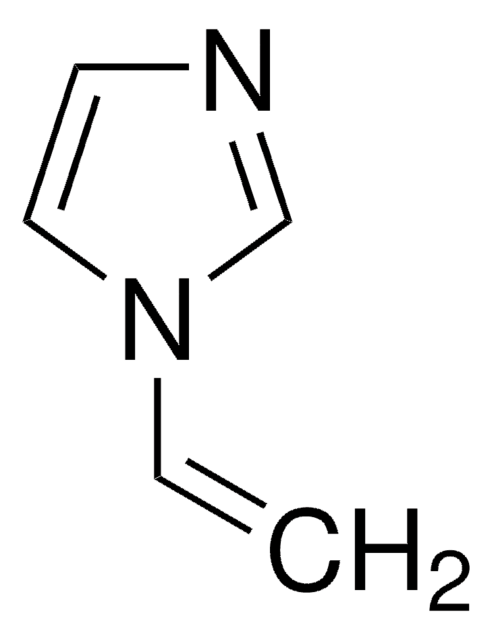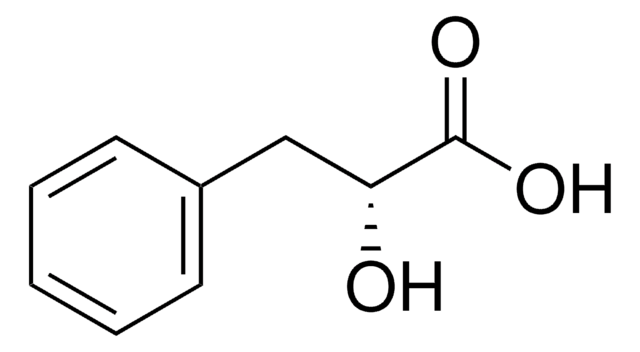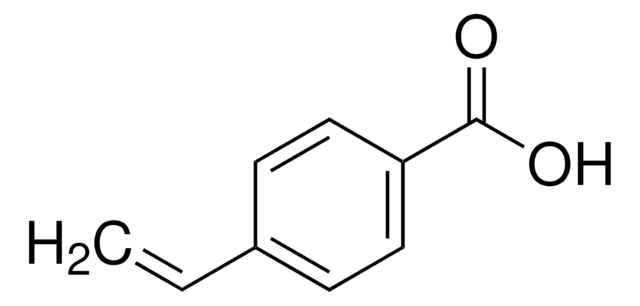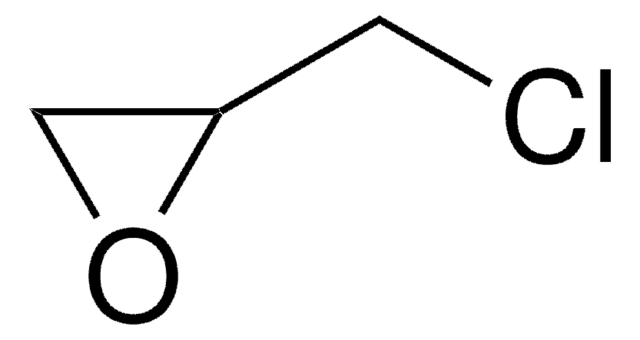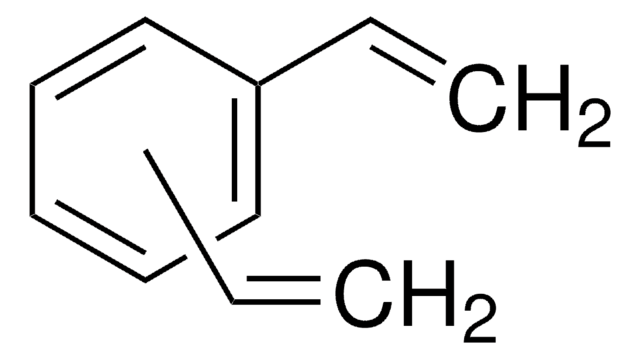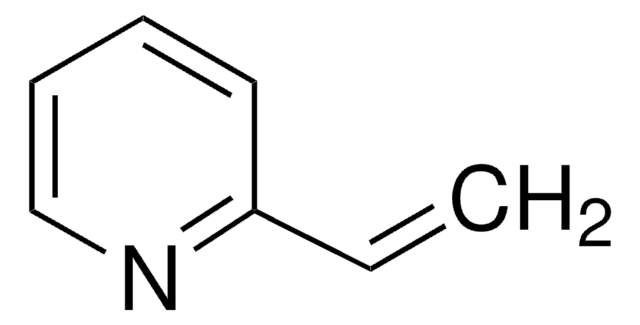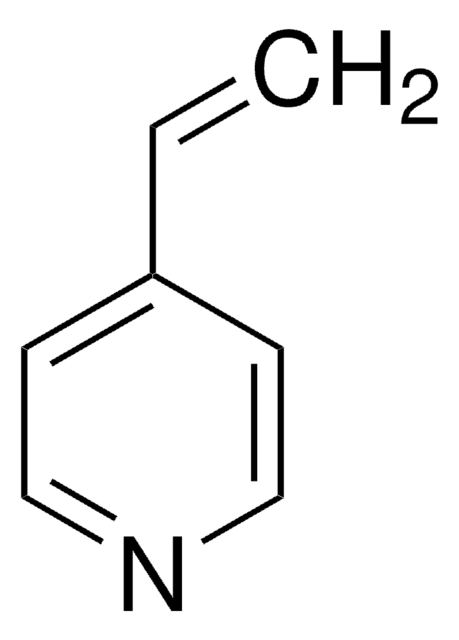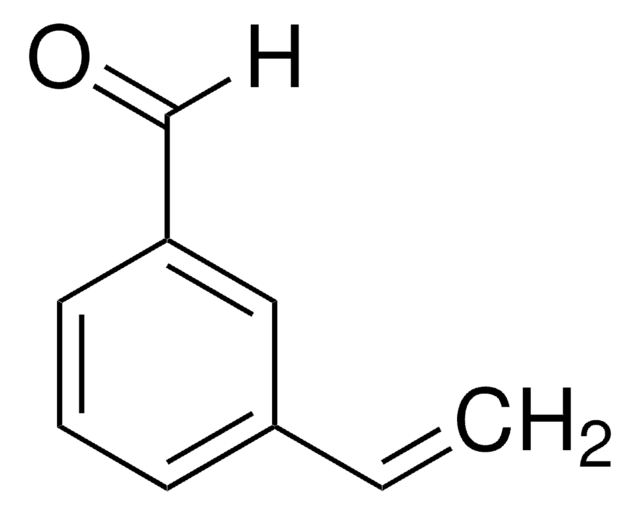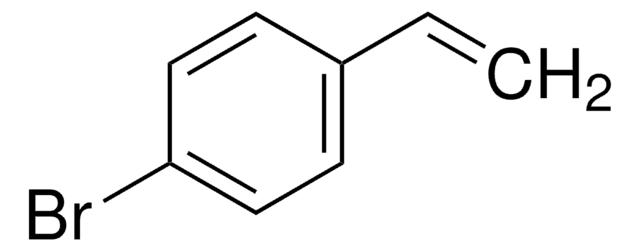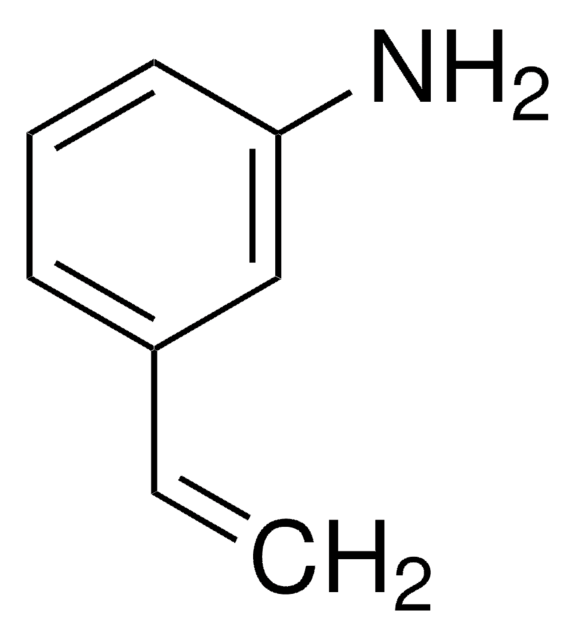436887
4-Vinylbenzyl chloride
90%
Synonyme(s) :
4-(Chloromethyl)styrene
About This Item
Produits recommandés
Niveau de qualité
Pureté
90%
Forme
liquid
Contient
500 ppm tert-butylcatechol as inhibitor
Indice de réfraction
n20/D 1.572 (lit.)
Viscosité
1,830 cP(25 °C)(lit.)
Point d'ébullition
229 °C (lit.)
Densité
1.083 g/mL at 25 °C (lit.)
Température de stockage
2-8°C
Chaîne SMILES
ClCc1ccc(C=C)cc1
InChI
1S/C9H9Cl/c1-2-8-3-5-9(7-10)6-4-8/h2-6H,1,7H2
Clé InChI
ZRZHXNCATOYMJH-UHFFFAOYSA-N
Vous recherchez des produits similaires ? Visite Guide de comparaison des produits
Catégories apparentées
Description générale
It is also:
- A component of ion exchange resins, photo-resist polymers, cross-linkable fibers, coupling agents and electroconducting polymers.
- Starter for various copolymer preparations.
- Dual functional monomer. Readily derivatized by chloride displacement.
Application
- The hypercross-linked polymer for supercapacitor applications. Incorporation of 4-vinyl benzyl chloride contributes to the formation of a porous structure and specific surface area which facilitate efficient electrolyte ion diffusion and provide ample sites for charge storage, leading to enhanced electrochemical performance.
- The polymeric thin films by the matrix-assisted pulsed laser evaporation (MAPLE) technique. The resulting polymeric thin films can exhibit non-linear optical effects such as optical second harmonic generation, electro-optic modulation, or optical frequency conversion. These properties make them suitable for various applications in non-linear optic devices.
Mention d'avertissement
Danger
Mentions de danger
Conseils de prudence
Classification des risques
Acute Tox. 3 Dermal - Acute Tox. 4 Oral - Eye Dam. 1 - Skin Corr. 1B - Skin Sens. 1
Code de la classe de stockage
6.1A - Combustible acute toxic Cat. 1 and 2 / very toxic hazardous materials
Classe de danger pour l'eau (WGK)
WGK 3
Point d'éclair (°F)
219.2 °F - closed cup
Point d'éclair (°C)
104 °C - closed cup
Équipement de protection individuelle
Faceshields, Gloves, Goggles, type ABEK (EN14387) respirator filter
Faites votre choix parmi les versions les plus récentes :
Déjà en possession de ce produit ?
Retrouvez la documentation relative aux produits que vous avez récemment achetés dans la Bibliothèque de documents.
Les clients ont également consulté
Notre équipe de scientifiques dispose d'une expérience dans tous les secteurs de la recherche, notamment en sciences de la vie, science des matériaux, synthèse chimique, chromatographie, analyse et dans de nombreux autres domaines..
Contacter notre Service technique